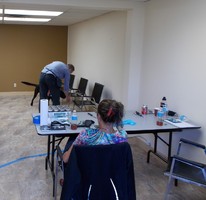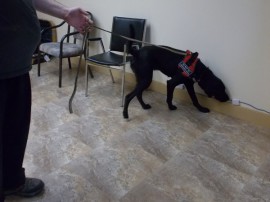
Bed Bug Detection Dog Handler Course
All Bed bug dogs are sold with an six day extensive training course. Course can be done at our location or yours.
Bed Bug dog handlers Course
Course introduction and goals
Dogs
Evolution of dogs
Dog breed selections for scent detection
A. Breed drives
B. Breed characteristics
C. Temperament & social ability
Dog philosophy
Handler selection and obligations
Bonding
First six weeks
Introduction to the new household
A. Tie-down/crate training
B. Boundaries
C. Human/animal of the household do's and don'ts
Handler replacement/retraining
Basic scent theory
Dog's sense of smell
Scent Discrimination
Terminology
Scent association
Primary rewards/secondary rewards
Food vs toy drive
Passive and aggressive alerts
Odor recognition indicators
Interpretation
Detection Wheel
Training aid
Construction
Uses
Scent Preparations
Training Aids
A. Preparing vials/bags
B. Handling and storage of bed bugs
C. Gloves vs tongs
D. Contamination of training aids
E. Hide placement
F. Difficult search, easy find, easy search difficult find
Search Strategies
Preparing the dog to search
Patterns
Air currents
Scent patterns and cones
Search techniques
In the field
Safety checks
Obstacles
Distractions
Stamina
Record keeping
Canine first aid
Advanced Detection
Unusual search areas
Indicating on castings/dead bugs
False alerts
Shaping and improving indication skills
Training for distractions
Maintaining the drive
Problem solving
Evaluating the present performance of you and your dog
Obedience and agility training
Equipment
Heel
Sit
Down
Come
Wait
On your side
Hup
Formal/informal training
Health?Grooming
Maintaining the training
Testing vs training
Distracters
Challenging you and your dog
Certification
Written exam
In the field practical search test
Graduation/Certification






